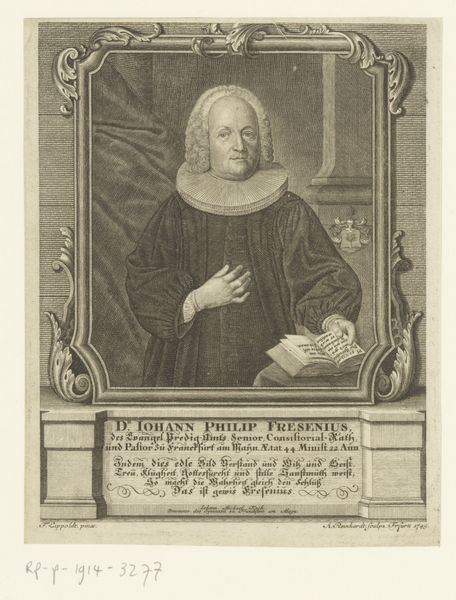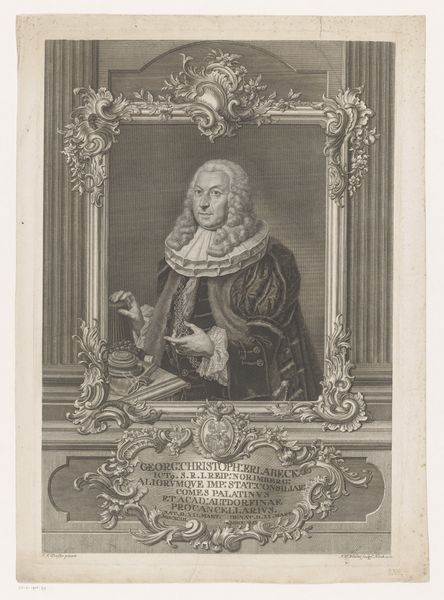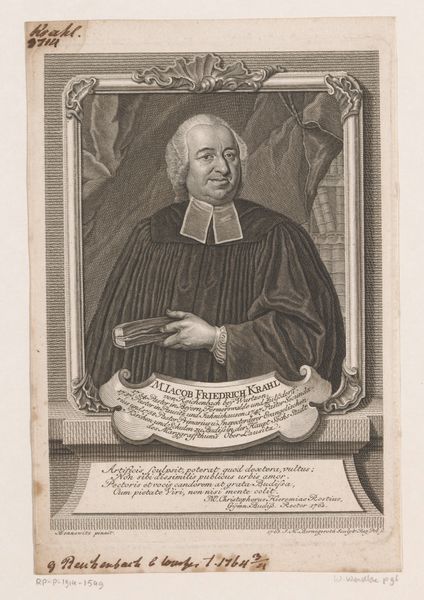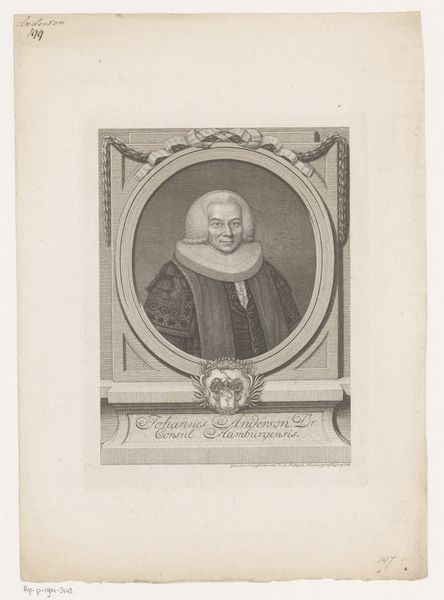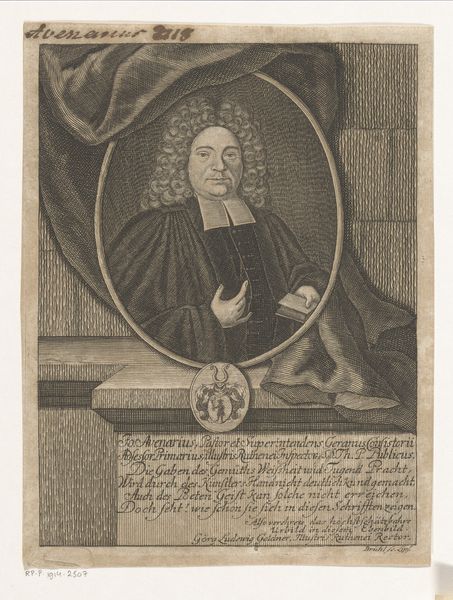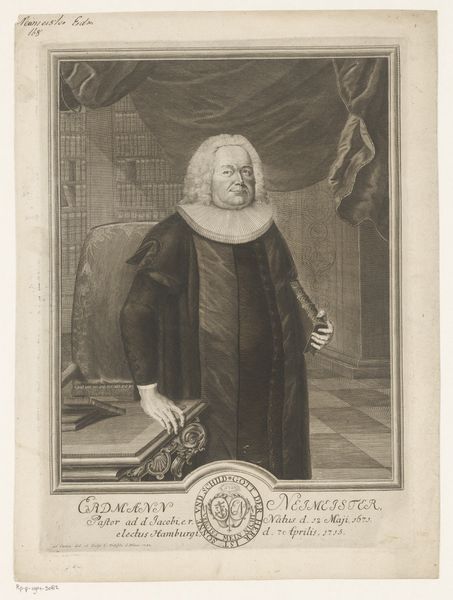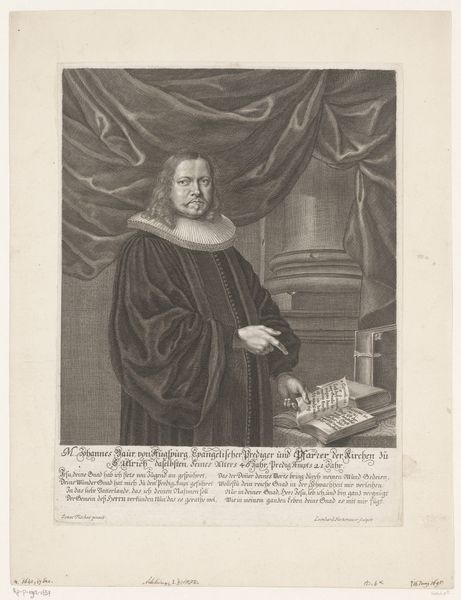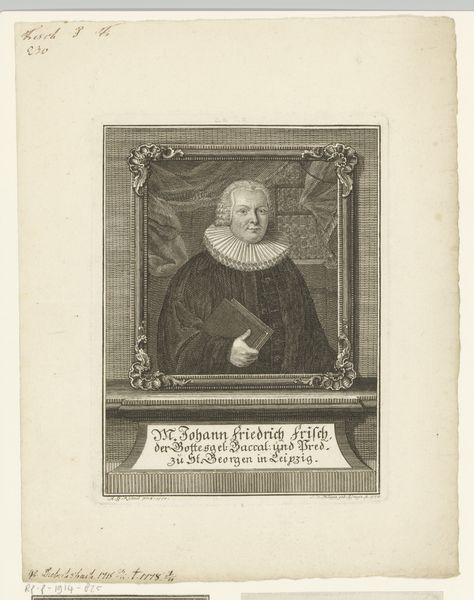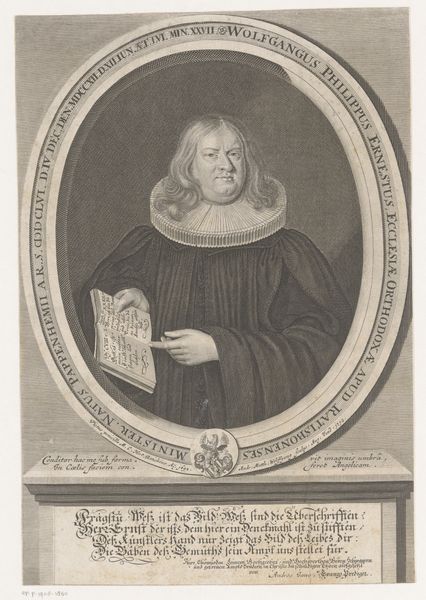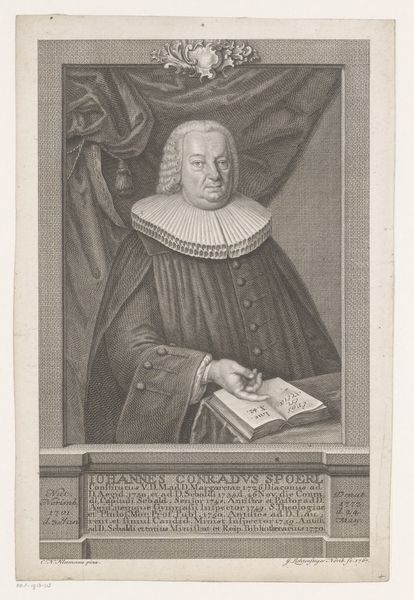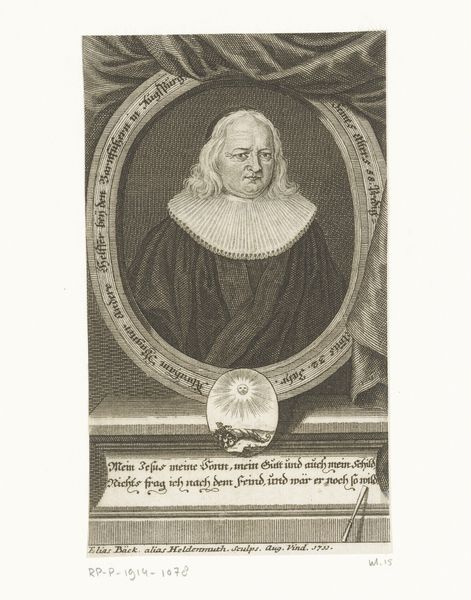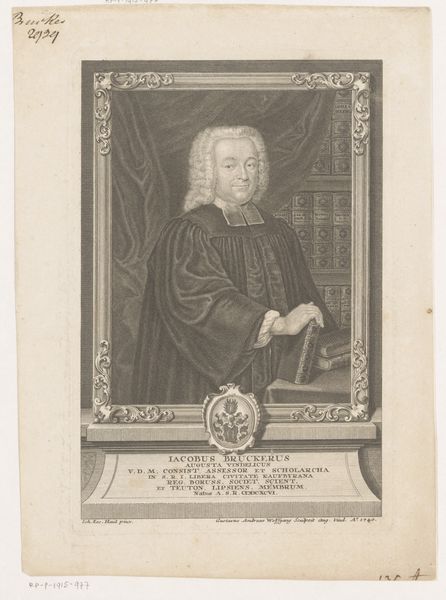
print, engraving
#
portrait
#
baroque
# print
#
caricature
#
figuration
#
history-painting
#
engraving
Dimensions: height 324 mm, width 254 mm
Copyright: Rijks Museum: Open Domain
Editor: Here we have Johann Alexander Bòner’s 1683 engraving, "Portret van Justus Jacob Leibnitz," at the Rijksmuseum. The contrast of light and shadow in the Baroque style lends a real gravity to the portrait. What strikes you about the composition of this print? Curator: Focusing on its structural elements, the formal portrait is strategically positioned within a carefully constructed oval. The cherubs add dynamism, drawing the eye across the plane, yet confined within its edges. Notice how this arrangement leads to a study of binary opposition. Editor: Binary opposition? Curator: Yes, between earthly and divine. Observe how Leibnitz’s grounded figure is juxtaposed against a ethereal celestial presentation. These visual juxtapositions ask the viewer to contemplate the perceived realms of thought and life during the Baroque. Also notice the strategic text positioning, which reinforces societal rank and authority. The entire construction is designed for the communication of power through graphic representation. What effect does the textual element create in the composition? Editor: The text almost acts as a frame, adding weight to the bottom of the print and further emphasizing the figure's importance. How fascinating. I hadn't thought about how the cherubs offset the gravitas. Curator: Indeed, Bòner masterfully manipulates form to communicate complex ideas within this formal portrait. Consider the deliberate rendering of lines to elicit this effect. Editor: I'm starting to notice the intentional contrast and balance a lot more! Thanks for illuminating the power of structural interpretation in this print.
Comments
No comments
Be the first to comment and join the conversation on the ultimate creative platform.
